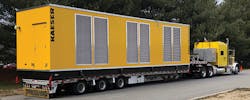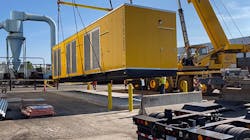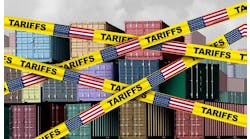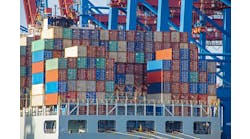This article is a part of a series about equipment-as-a-service. Explore more about this topic in the following articles.
- Machines-as-a-service bolster packaging industry
- Equipment-as-a-service: A CapEx vs OpEx decision
- Hands-off utilities guaranteed
- Equipment, production and machines at your service
Subscription-based business models are taking on many different forms. Kaeser Compressors has offered compressed-air-as-a-service for more than a decade, for companies that want hands-off and guaranteed utilities. Many other companies are dabbling in equipment rental or production-as-a-service, and technology companies that specialize in data collection and analytics are doing the same. Many original equipment manufacturers (OEMs), machine builders or equipment suppliers and distributors can realize new profits.
End users can also use subscription services to operate parts of the factory process outside of the machines. About 15 years ago, Kaeser Compressors started Sigma Air Utility, essentially compressed-air-as-a-service. For a monthly fee, Kaeser installs, monitors and maintains the compressor system. It remotely monitors equipment health to guarantee factory uptime. The uptime guarantee is possible because every system has backup equipment, should the original system go down, and the system is continuously monitored and serviced preemptively.
Customers no longer have to monitor their compressed air systems or call for service when needed, and most customers do not even see their systems, as they’re housed in an engineered enclosure outside of the facility. “We can do our service without having to interfere with the production,” says Werner Rauer, production manager, compressors and technical development, at Kaeser Compressors.
Figure 2: Kaeser can install, monitor and maintain the compressor system to guarantee factory uptime.
“While not all air utilities or air-as-a-service require that modular compressed air delivered enclosure, it is the most common thing these days,” says Michael Camber, marketing services manager at Kaeser Compressors. “We can deliver it and commission it without them having to do any modifications.” The system also allows for great flexibility to make it bigger or smaller if production requirements change.
“It's not very common, but it's becoming more so, I think, as more products become a service and so many things that used to be assets are now provided through some type of subscription,” says Matt McCorkle, manager of branch operations at Kaeser Compressors. He also says some companies have plenty of experience with managing and operating compressed-air equipment, but they don’t find it productive for them.
“When you're dealing with Sigma Air Utility, you're also dealing with finance contracts, so a broader range of people have to get involved, because the accounting does play a role in the decision to do this,” McCorkle says. Depending on how the customer's accounting department handles operating leases versus capital expenditures, that could impact their taxes or budget and, ultimately, their investment decisions.
Figure 3: Modular compressed-air enclosures can be deliver and commissioned without any need for modifications.
As part of the process, Kaeser conducts an air-demand analysis of the facility. “We understand how much flow they're using, what kind of pressure, what air quality needs there are, what the environment is like,” McCorkle says. “Then, we basically design a fully redundant system for their needs and certainly also consider their expansion requests.” The contract will outline the monthly payment for a certain amount of air and penalties if the demand is not met.
Contracts typically run about 10 years. The model is much more accepted now than it was 15 years ago, Werner says, and now Kaeser does offer contracts in smaller increments, down to five years. At the end of a contract, customers can renew or buy the equipment outright.
“It is a very predictable expense,” McCorkle says. Customers receive monthly reports, or more if they request, on equipment performance, and the service becomes an ongoing air study. Advanced controls on the individual compressors and dryers communicate energy usage, maintenance messages, temperatures and other parameters. With a large system, the Sigma Air Manager collects all the information from individual machines and monitors the entire system.
Figure 4: When dealing with finance contracts, a broader range of people have to get involved.
To properly size the system, the air-demand analysis also uses Kaeser’s energy-saving system. This collects data over time to chart how much air is being used, which machines are running and the overall efficiency of the system and whether pressure stability is achieved. Kaeser then takes that data and runs software to simulate different machine mixes to determine the lowest cost and the most stable pressure. This is a highly in-depth simulation, which requires renting space in a supercomputer facility to do the calculations.
Kaeser also has a program called KAirFree, which is geared toward smaller systems less than 20 hp. Users choose from five different plan levels and pay a per-hour rate for a one-year contract, and it can all be ordered online for a small startup cost. The program began during COVID, but it has continued to grow, and 100% of the users have renewed contracts so far.
Originally, Kaeser Compressors envisioned this program would be ideal for smaller businesses or contract manufacturers. “What we found is we even have some large manufacturing customers that might have a special need in one area of the plant for a smaller machine, and they’ll go with this for that particular room where they just want dedicated compressed air for that particular space,” Camber says.
“Our goal is that it’s out of sight, out of mind,” McCorkle says.
The program has also helped Kaeser from a research-and-development standpoint. All the real-world data it has collected over the years in the field is also analyzed and incorporated into the next designs.
The program is widespread across many industries, including automotive-parts manufacturing, cement plants, food distribution centers, food processing and binding and printing facilities.









